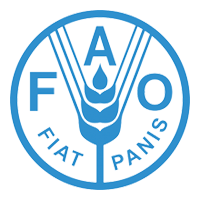Measuring Agricultural Innovation System Properties and Performance Illustrations from Ethiopia and Vietnam
The rapidly changing nature of the global food and agriculture system suggests the need to rethink how innovation can contribute to developing-country agriculture. While scientific and technological changes in agriculture can help foster productivity growth and poverty reduction, their contributions are incomplete without commensurate changes in the wider system of which they are a part. A more systemsoriented understanding of how innovation occurs in a society and economy is critical to promoting dynamism, responsiveness, and competitiveness in developing-country agriculture and, ultimately, to enhancing productivity and reducing poverty. However, without adequate measures of the properties and performance of an agricultural innovation system, it is difficult for policymakers, investors, donors, and practitioners to promote policies and investments that foster greater innovativeness in agriculture. This suggests the need for a measure of agricultural innovativeness that preferably extends beyond the “black box” approach of measuring only inputs and outputs, focusing on the underlying processes that contribute to building the capabilities needed to create an innovative agricultural sector. To this end, this paper attempts to provide a “proof of concept” that innovativeness in developing-country agriculture can be measured. It first identifies a set of indicators from secondary data sources that measure the key elements of an agricultural innovation system. Several hundred indicators are reviewed, validated, and aggregated into a unique Agriculture, Development, and Innovation Index (ADII). The paper then provides a toolkit for collecting and analyzing “systems-oriented” indicators that add more process-related nuances to the ADII with both attributional a toolkit for collecting and analyzing “systems-oriented” indicators that add more process-related nuances to the ADII with both attributional and relational data. This is illustrated with data collected in Ethiopia and Vietnam in 2007–08.
Related Resources
Measuring Agricultural Innovation System Properties and Performance: Illustrations from Ethiopia and Vietnam
The rapidly changing nature of the global food and agriculture system suggests the need to rethink how innovation can contribute to developing-country agriculture. While scientific and technological changes in agriculture can help foster productivity growth and poverty reduction, their contributions...
Indicators of soil quality: A South-South development of a methodological guide for linking local and technical knowledge
This methodological guide was initially developed and used in Latin America and the Caribbean-LAC (Honduras, Nicaragua, Colombia, Peru, Venezuela, Dominican Republic), and was later improved during adaptation and use in eastern African (Uganda, Tanzania, Kenya, Ethiopia) through a South-South exchange...
Monitoring and Evaluation Strategy Brief Monitoring and Evaluation Strategy Brief
This brief provides an overview of the monitoring and evaluation (M&E) system of the CGIAR Research Program on Aquatic Agricultural Systems (AAS) and describes how the M&E system is designed to support the program to achieve its goals. The AAS...
What Does Innovation Smell Like? A Conceptual Framework for Analysing and Evaluating DFID-RIU Experiments in Brokering Agricultural Innovation and Development
This paper briefly reviews three conceptual frameworks: namely, the national agricultural research system (NARS), the agricultural knowledge and information system (AKIS) and the agricultural innovation system (AIS) concepts. Next, the paper reviews the definition of ‘innovation’ and proposes that agricultural...



